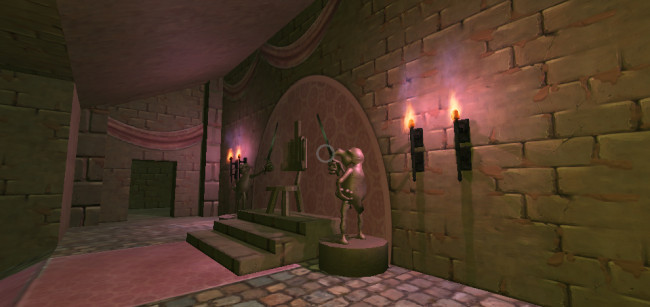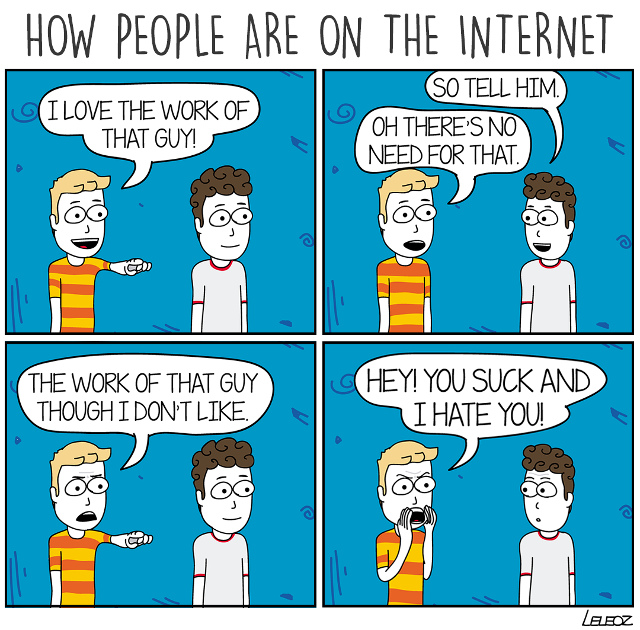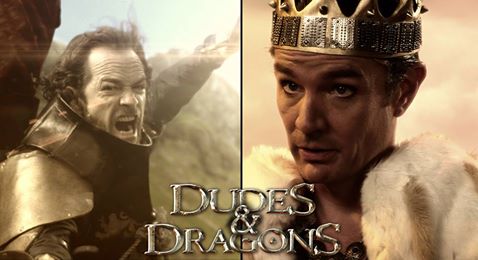Frayed Knights 2: The Rats Are Back!
Posted by Rampant Coyote on March 30, 2016
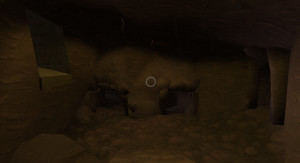 You knew this, didn’t you? The Rats of Nom would be back in Frayed Knights 2? It’s be kind of lame if they weren’t.
You knew this, didn’t you? The Rats of Nom would be back in Frayed Knights 2? It’s be kind of lame if they weren’t.
The funny thing is that the whole “Rats of Nom / Farmer Brown’s Cellar” quest in Frayed Knights: The Skull of S’makh-Daon was really a set-up for a joke that doesn’t happen until the second game. It’s very satisfying to me that that particular quest has proven so popular and stood on its own. They’ve kinda become a signature Frayed Knights thing even from their brief appearance… although I’m sure that having them earlier in the game rather than later was helpful in that respect.
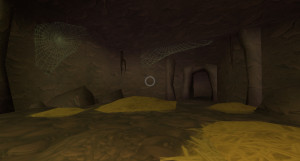 But while the cellar and tunnels in FK1 were really just an outpost of the nearsighted, intelligent, EVIL rats of Nom, in FK2 you’ll be visiting a couple of their strongholds, and it’ll get… messy. The rats play a major role in FK2, and so you will be encountering the power of their fully operational battle station. Or something. 🙂
But while the cellar and tunnels in FK1 were really just an outpost of the nearsighted, intelligent, EVIL rats of Nom, in FK2 you’ll be visiting a couple of their strongholds, and it’ll get… messy. The rats play a major role in FK2, and so you will be encountering the power of their fully operational battle station. Or something. 🙂
For that, we’re working on the look and feel of their levels, which are decidedly unique in their style and architecture. That’s one of the things that’s so rewarding (and such a pain in the butt to develop…) in the FK series… trying to make sure all the dungeons look and feel different. This is more than just texturing – it’s in the way it is laid out from the get-go.
Filed Under: Frayed Knights - Comments: 3 Comments to Read
FanX 2016: The hangover. I mean, the debriefing.
Posted by Rampant Coyote on March 28, 2016
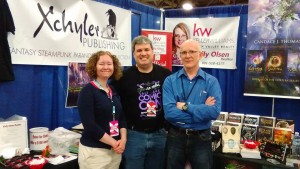 I spent the weekend at the Salt Lake City Comic Con FanXperience (or FanX), and had a blast. I was exhausted, I sold books but not as many as I would like, bought way too much stuff (mainly books and T-shirts), and I only went to one major celebrity panel (Alex Kingston of E.R. and Doctor Who). But I got to chat with a bunch of great friends, attend lots of great panels, and pretty much got to live and work at a massive geek party for three days.
I spent the weekend at the Salt Lake City Comic Con FanXperience (or FanX), and had a blast. I was exhausted, I sold books but not as many as I would like, bought way too much stuff (mainly books and T-shirts), and I only went to one major celebrity panel (Alex Kingston of E.R. and Doctor Who). But I got to chat with a bunch of great friends, attend lots of great panels, and pretty much got to live and work at a massive geek party for three days.
Xchyler Publishing has several authors here in Utah, and so we’ve teamed up to run a booth together for many events. This year, we even had a sponsor to help us out – Kelly Olsen of Keller-Williams. That made it much easier to not lose money on the booth. 🙂 It’s also incredibly fun to hang out with some very creative and talented individuals.
John Olsen posted a great write-up of several of the panels he attended. He and I attended a lot of the same panels, so our notes would be pretty similar. He’s done an outstanding job of hitting highlights and some of the key pieces of advice from those panels. There are also some great write-ups from my friends David West and Sarah Seeley.
Some of the panels I attended had nothing to do with making games or writing, but were just lots of fun. Like how to tell better stories as a game master in RPGs. 🙂 Although I’m pretty sure I can apply some of those ideas to game development.
 The writing panels I attended weren’t quite as deep as the ones at Life, the Universe, and Everything, but that makes sense considering the audience. The LTUE crowd tends to be more experienced, more “amateur” rather than “aspiring.” Still, there were a lot of great tips on everything from the craft of writing, to professionalism, to promotion. Some tips were repeated across multiple panels (especially when it was the same panelist), but here are a few tidbits:
The writing panels I attended weren’t quite as deep as the ones at Life, the Universe, and Everything, but that makes sense considering the audience. The LTUE crowd tends to be more experienced, more “amateur” rather than “aspiring.” Still, there were a lot of great tips on everything from the craft of writing, to professionalism, to promotion. Some tips were repeated across multiple panels (especially when it was the same panelist), but here are a few tidbits:
“Pantsing” vs. “Plotting” – or “Discovery” vs. “Outlining.” The difference here is whether an author just kinda jumps in with an idea of the characters and the situation and just runs with it … discovery or “pantsing” (meaning “seat of the pants”) or if they outline everything out in advance, and to what level. There are big, popular authors who do both. The thing that keeps coming up (for me) as this gets discussed is that the discovery writers really end up with a first draft that is a very elaborate outline, which they then have to whip into shape and give it some structure. The outliners… well, there are several layers of outlines, and for some writers, the story often starts deviating from the outline as they go. I think this tends to run more of a spectrum, really, and some of it depends on whether or not an author is under contract with a publisher that demands an outline.
 Another point that got brought up repeatedly was how different authors have different processes that work for them. Nobody works exactly the same. It seems like the point is to keep working on and refining your own process, until you find what works best for you. This is equally applicable to games development and writing, I think.
Another point that got brought up repeatedly was how different authors have different processes that work for them. Nobody works exactly the same. It seems like the point is to keep working on and refining your own process, until you find what works best for you. This is equally applicable to games development and writing, I think.
An amusing analogy: “Your brand-new idea for a story is your crush. Your book in development is your spouse.” The point being that it’s easy to get excited and passionate about things at first, but turning that into a complete work takes commitment and a lot of work.
Realize that you are going to have to leave stuff to your reader’s imagination. This is a good thing, if handled well. You can hint at the environment with just a few words, reveal the critical pieces, and let their imagination do the rest.
You can make a lot of mistakes as a writer (and as a game developer, IMO) and may be forgiven by the readers. But you absolutely must not be either boring or confusing.
 And finally, the point that gets brought up over and over again… writing is a skill, like any other. The “million words” advice was repeated in panel after panel… the idea that your first million words of creative writing are going to be crap… just practice… no matter how good you think you’ll be. Kevin J. Anderson’s wife, Rebecca Moesta, had a particular amusing story about that and how she just knew that she was going to be the exception. She kind of was, as she got a very extensive and personalized rejection for her first story, but had no idea how most authors struggle to get to that point. 🙂 Yeah, sometimes we get lucky from time to time (Julie Frost made a joke during LTUE about how as long as we’re practicing writing, we may as well practice submitting, and practice signing contracts, and practice cashing checks during that time). The bottom line is to sit down and get working on it, keep improving, and finish stuff. And yes, this advice applies 100% to indie game development as well.
And finally, the point that gets brought up over and over again… writing is a skill, like any other. The “million words” advice was repeated in panel after panel… the idea that your first million words of creative writing are going to be crap… just practice… no matter how good you think you’ll be. Kevin J. Anderson’s wife, Rebecca Moesta, had a particular amusing story about that and how she just knew that she was going to be the exception. She kind of was, as she got a very extensive and personalized rejection for her first story, but had no idea how most authors struggle to get to that point. 🙂 Yeah, sometimes we get lucky from time to time (Julie Frost made a joke during LTUE about how as long as we’re practicing writing, we may as well practice submitting, and practice signing contracts, and practice cashing checks during that time). The bottom line is to sit down and get working on it, keep improving, and finish stuff. And yes, this advice applies 100% to indie game development as well.
As a side note – someone came up to the booth this weekend (I wish I could remember his name) and told me how much he loved my story, “The Van Tassel Legacy,” from Mechanized Masterpieces 2. He wanted to know what other steampunk stories I’ve published since then (sadly, none, as I’ve been working on Frayed Knights 2 and other genres). Anyway, this totally made my day. My day? My week.
Anyway, I hope some of these bits of advice may be useful to you. Good luck!
Filed Under: Events, Writing - Comments: Comments are off for this article
A Brief Report from the FanX 2016 Floor
Posted by Rampant Coyote on March 25, 2016
The first day of FanX has been a lot of fun. I should probably work more than I did today. I don’t want to take any books home with me. 🙂
We got to meet the main cast of Mythica. I didn’t really get to talk to Melanie Stone much, but everyone else was incredibly nice and fun and waaay tolerant of me geeking out. Jake Stormoen (left), who plays Dagen in the films, pulled out the D20 he carries around with him in a small bag just in case a D&D game breaks out. You know, be prepared and all that. Also proving his geek cred.
Anyway, lots of hanging out with authors, friends, meeting a few new people, and attending panels. I haven’t really been hitting any major celebrity panels or anything, but I did pass by Peter Davison (Doctor Who’s 5th Doctor).
Filed Under: Events - Comments: Comments are off for this article
Off We Go… to FanX!
Posted by Rampant Coyote on March 23, 2016
Tomorrow through Saturday is Salt Lake Comic Con FanXperience 2016. I’ll be there. Signing books ‘n stuff. And having a blast.
I will have paper copies of the anthologies from Xchyler Publishing for sale (Mechanized Masterpieces 2, Beyond the Wail, and Terra Mechanica). I expect I’ll be at the booth at least half of the time.
Some of the big names that are coming this weekend include Summer Glau, Alex Kingston (yes, we get TWO Rivers this year!), Matt Smith, Gillian Anderson, George Takei (“Oh, my!”), Kate Beckinsale, Jeremy Renner, Levar Burton, Alan Tudyk, Sylvester McCoy, Peter Davidson (yes, we get THREE Doctors!), and Buzz Aldrin. We’ll be overflowing with great authors, from bigger names like Brandon Sanderson, David Farland, Kevin J. Anderson, Dan Wells, Claudia Gray, Larry Correia, and (I think) Tracy Hickman, to a bunch of lesser-known but very worthy wordsmiths who really know their stuff who are too numerous to mention, but some of ’em are fellow Xchyler authors.
Anyway, it’ll be a good time. It always is.
Filed Under: General - Comments: Comments are off for this article
GOG.COM Insomnia Sale
Posted by Rampant Coyote on March 22, 2016
If you haven’t already seen this yet…
GOG.COM has a “Sleepy Insomnia” sale with one game at a time going on sale at a time, until they have “run out”
Great stuff if you have games that you are waiting for. You have to be fast, though. They only sell a few of them at a time at steep discounts.
So far, it seems that most of their games are newer indie games that are normally priced above $10. Good stuff if you want to round out your collection. I’ve seen Pillars of Eternity on rotation a couple of times, which is awesome if you don’t have the game yet.
Filed Under: Deals - Comments: Comments are off for this article
Frayed Knights: Things Coming Together
Posted by Rampant Coyote on March 21, 2016
While it was from my era, I never really watched the TV show “The A-Team.” I think I saw one full episode. Some things are a little too ridiculous even for a kid to suspend disbelief. But the catchphrase from one of the characters stuck even without me watching the show… “I love it when a plan comes together.” Maybe not as memorable as Mister T’s “I pity the fool,” but it’s the phrase that comes to mind when things start coming together.
There’s still way too much to get done, but having things I’ve farmed out come back to me is a tremendous thrill. Still. Every time.
I think a lot of it is the reason I love making video games in the first place. It’s a creative endeavor. Having things which previously existed only in your own imagination take form outside yourself is amazing. Having other people contribute to this vision, and sharing this task of creating an imaginary world, is equally amazing. Even … or maybe especially… when the vision of the contributors is compatible with but not an exact match for your own. At that point, it grows into a feeling of discovery as much as creation.
So… yeah. Stuff is trickling in. Stuff is coming together. I’d hoped to make beta in time for Salt Lake Gaming Con, but there’s just no way that’s going to happen. There’s going to be a LOT more to show with the game, but not stuff that demos well. What demos well at a convention is that very first dungeon, which I showed last year.
I’ll at least put together a trailer (one that doesn’t suck this time, I hope) that will include more of the new content.
Filed Under: Frayed Knights, Production - Comments: Read the First Comment
Navigating a Negative Review Crapstorm
Posted by Rampant Coyote on March 18, 2016
This is how reviews generally work on the Internet. Which is more of a magnification of how word-of-mouth has worked since the dawn of language:
(Image from Happy Monday Comics)
Again, this is human nature. My brother once called the number on the “How is my driving?” bumper sticker to report how conscientious a particular driver had been. The person taking the call was incredulous and kept asking for the nature of the complaint. Nope, no complaint, my brother told them. Just a complement. He was a good driver. They literally had no process for handling positive feedback.
Even where feedback may be more varied, there tends to be a pile-on effect, especially with negative reviews. This can sink a flawed but promising product in no time, demoralize the creators, and delight the trolls. Nicholas Laborde of Raconteur Games explains how his team was able to turn this catastrophe around into some measure of success:
What I learned from our game having a “Mostly Negative” on Steam.
There was a bit of discussion this week about a “rogue” PR person manning the Twitter account for the beleaguered BART system who perhaps single-handedly deflected a lot of this “pile-on” effect by … get this… being transparent and honest and turning it into an actual two-way conversation for a few hours.
Wired: BART’s righteous Tweetstorm reminds us its problems are our fault
I hopefully won’t have enormous call to deal with something on quite this magnitude anytime soon, but the truth is that anytime you create something and put it out there for the public, especially anything experimental, this is a risk. Not as big a risk as being ignored completely, but it’s a risk.
More importantly, dealing with complaints and negative reviews are a fact of life, even if they don’t escalate to crapstorm-levels. I think there are some things to learn here on a smaller scale. You can never please everyone, and the anonymity of the Internet brings out the trolls. Responding defensively is rarely the answer, but good communication, a pro-active response to complaints, and an inhumanly good attitude and willingness to turn it into a learning opportunity really do help.
Filed Under: Biz - Comments: 3 Comments to Read
2016 IGF Awards
Posted by Rampant Coyote on March 17, 2016
The 18th annual Independent Games Festival is happening this week, and the awards are in. Top honors went to Her Story, which won the Excellence in Narrative award as well as the Seumus McNally Grand Prize. Fan favorite Undertale won the audience award… not that it needs the cash, from what I have seen. 🙂
More information can be found here.
Congrats to the winners and the finalists!
Filed Under: Events, Indie Evangelism - Comments: Comments are off for this article
Ultima V, Publisher Contract Dangers, and Why We Needed Indie
Posted by Rampant Coyote on March 16, 2016
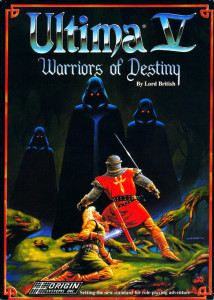 There were a whole lot of reasons why I was an evangelist for the indie revolution. Just making sure that game developers had a reasonable path to create and distribute their creations without having to go through the giant gatekeepers was a big one. Reducing the barriers to entry was huge.
There were a whole lot of reasons why I was an evangelist for the indie revolution. Just making sure that game developers had a reasonable path to create and distribute their creations without having to go through the giant gatekeepers was a big one. Reducing the barriers to entry was huge.
But there was another reason. In the relationship between studios and publishers, I knew the studios were getting screwed. Not being a biz guy, I didn’t know all the details, but I knew some of the general terms I heard sounded unfair. I read an article a little while ago that illustrated that those terms were actually some of the most fair language in those contracts – the real screws they put to studios were buried and seemed innocuous.
I knew about the poor relationship between Electronic Arts and Origin – the bad blood was even turned into jokes inside a couple of the Ultima games. But the true nature of the feud was obscured behind NDAs and, eventually, the forgetfulness of history. Fortunately, unearthed in some records of another company, the Digital Antiquarian has uncovered just how nasty stuff could really get.. and how a company like EA would use their power and secret “bombs” in their contracts to crush those who wouldn’t fall in line.
Now, to be fair, in this case, it really did take two to tango. Both sides were, IMO, not behaving particularly well. I don’t really have a problem with the contract having methods for both parties to protect themselves. My problem has always been more of the inequality of the relationship. In the “bad old days,” might (measured in dollars) made right, and the publishers ran all of the tables.
In this case, it does sound like both sides were behaving poorly. EA was using their relationship as Ultima‘s publisher to validate and boost an Ultima clone. Let’s be real here: They were trying to ride Ultima‘s coattails into success and turn it into a competing franchise which they controlled, and simultaneously making it difficult for Origin to try to take any kind of legal action against them. Origin responded by dragging their feet to let the contract expire. EA’s response was to nuke the site from orbit. For the whole story (and then some), check out the whole (fascinating!) story:
The Digital Antiquarian: The Road to Ultima V
In this case, EA sought to trap them via returns. This is an issue in book publishing and apparently with games back in the 1980s (still?), where a retail shop can return unsold stock for a refund. There are weird side-effects to this one, because it means that (obviously!) a distributor or publisher can dictate limits to the number of copies a retailer can have. They’d have that ability anyway, but in this case the exercise of it becomes commonplace, and has often been used to “punish” retailers who have done things like break street dates.
By the agreement, EA sought to exercise it’s contract option by demanding product from Origin (which they knew wouldn’t sell) – which meant a big cost for duplication and manufacturing on Origin’s side. Then Origin was also on the hook to pay the cost of returns as well. In effect, they were trying to force Origin to bankrupt itself.
If they’d succeeded, the whole Origin story would have ended at Ultima IV. No Ultima V, or VII. No Wing Commander. No Ultima Underworld. Fortunately, Origin had found a protector in the form of another publisher, Brøderbund.
My point here this isn’t really to paint to EA is the villain here. There is undoubtedly a whole lot more to the story, and who turned out to be the biggest jerk in this relationship is probably a matter of perspective. Ultimately (no pun intended), the two companies kissed and made up, and then Origin was promptly run into the ground for reasons that can be distributed generously to both parties.
The point here is to illustrate just why we so desperately needed the indie revolution… in music, film, print, and games. While there have always been avenues for the entrepreneur to take to bypass the big gatekeepers, they have always been difficult to begin with, and they tend to get squeezed even harder once these gatekeepers start consolidating their power. In Akalabeth‘s day, Richard Garriott could just sell directly to local computer stores. Just a few years later, the distributors had the stores locked up pretty tight: you couldn’t sell without a big publisher / distributor.
This put a lot of power in the hands of these middlemen. Too much.
Today there is always an option to go without a publisher. There are two benefits from this. The first is the obvious: Creators don’t need to bow to the gatekeepers, and don’t need to accept their terms. They can go it alone and have a reasonable path to do so successfully. It’s still fraught with peril and doubt — there are never any guarantees — but it’s a viable option.
There is a potential secondary benefit to this as well, which I am not in a position to really see whether or not it is happening (but I hear rumors that suggest that it is *to a degree*). This has given independent studios some real leverage in negotiations. They have a lot more opportunity to say “no” to a deal. This means publishers can’t afford to play quite such hardball with their contracts anymore… it’s not a case of studios having few alternatives anymore. This puts pressure on the publishers to make things at least slightly more equitable.
So… for all the frustrations people may have about the glut of crap that hits the market hiding the good stuff, just remember that it still beats the alternative in a lot of ways.
Filed Under: Biz, Indie Evangelism, Retro - Comments: 2 Comments to Read
Consistent Quantity of Sufficient Quality, and the Long Tail
Posted by Rampant Coyote on March 14, 2016
Across the board, entertainment industries are overwhelmingly hit-driven. Super high-quality and super innovation both have a chance of knocking things out of the park in a HUGE way. Combine with some luck (the right game at the right time at the right price) and / or excellent marketing (sometimes fan-driven), and the rewards are tremendous. That’s how the game is played in the mainstream games industry, and in much of Hollywood, and the big book publishers, and the big music studios. It works for them because it maximizes the chances for the people with the deepest pockets.
But the other thing they do is throw a LOT of product out there, shotgun-style, seeing what lands.
The thing that I keep seeing across multiple industries is that for the little guys… the individual authors, indies, that group … who don’t have infinite time and resources, there’s another path that is by no means guaranteed, but seems to work better. The problem I have is that there’s a difference between knowing it and executing on it. So I keep harping on it and hope that I can figure it out myself.
The key to (eventual) success seems to be “consistent quantity of sufficient quality.”
Parsing it a bit… what does “consistent quantity” mean? That really comes down to regular, frequent releases. Customers / fans can’t wait forever for the next release. In the book world, every six months is sort of the rule-of-thumb for the acceptable time between novels. More than a year apart (at least for an author, maybe not for a series), and you start losing audience interest. For games… it’s probably about the same. For mobile, I’ve heard the number being between 3-6 months. I think for big-budget PC games, the time might be longer. For indie PC games… I think consistent releases in a relatively short time-frame might be key.
This is sort of what the big publishers do with their shotgun approach, but in slow motion. A slow-mo machine-gun approach, maybe? The advantage the indies have is a level of authorship. This has always been the case with books, but with games, the big studios crank out big games that often don’t have any kind of personalized signature, or personality. In Hollywood, there’s a little more of that with the key people (screenwriter, director, starring actors), but it’s still a bit generic.
That’s a huge problem for me with the next Frayed Knights release, because it has taken long enough that the first game is now ancient history. It’d be one thing if the first game was a mega best-seller or something and this was the long-awaited sequel. But while critically acclaimed, it was kind of a niche RPG. It’s a problem with all RPGs, in fact. These things just are not quick and easy to make. Not of sufficient quality, anyway. Which brings us to the next point.
What is “sufficient quality?” Now, in a hit-driven world, it’s “equaling or surpassing the production values of all of the competition.” But for indie game developers, that’s another story. But doing some comparisons with indie film, music, and novels, I don’t know that it’s a totally different world. The specifics vary greatly, but ultimately it comes down to a few things:
- Reasonable degree of craftsmanship. Not an amateur or lazy hack-job.
- Professional level of polish. No glaring mistakes that break the enjoyment of the product.
- Engaging product
- Reasonable uniqueness (at least from the customer’s perspective)
One thing I really wanted to put on that list was something about passion. But… as important as this is for me, I’ve discovered that skilled creators can shine it on pretty well. I know people who have really fallen in love with what a writer considered just another pot-boiler. So that’s really more of something the audience brings to the table, although I’d like to think that real passion and enthusiasm going into the making of the thing will translate into a more engaging result… and might make up for some small lapses in craftsmanship or professionalism.
This combination works because of the “long tail” in digital distribution. There are some suggestions out there that it even works without it, but it customers having access to a creator’s backlist in one way or another is critical.At the simplest level, it’s the difference between making a game every 2 years that must make $200,000 to keep a (tiny) studio afloat, and making a game every 6 months that must make only $50k. But it goes further than that… maybe one game every 6 months that needs to make only $30k, while the other 16 games in the backlist (which will grow to 20 by the end of 2 years) need to make an average of $5000 each over the course of the 2 years.
But there’s another factor which belongs to most entertainment media, but not so much in games: When the stars align and a product does well, the whole backlist does well as new people discover preexisting works. Historically, games have been so tech-driven this wasn’t the case. Newer games were almost always superior to older games in most ways. However, now that the technological growth curve for games has flattened out a bit, that perspective is more tradition-driven than reality-driven, and may change over time.
I grow convinced that video games may be an odd duck in many ways to other forms of entertainment, but that while some of the details may change, the root behavior is the same. I think (with help) there are a lot of things I could do to make a game like Frayed Knights faster, I don’t think I could get it to the point where I could come out with a game like that every six months.
I don’t think a rich, paint-by-numbers toolkit is the answer, either. I think some of the reason for the backlash against RPG Maker games on Steam and the like is that the toolkit disguises the quality. A really horrible, thrown-together title may look almost identical until the player has invested time and money into both.
The solution many game-makers have discovered is that rather than release an entirely new product, they can dole out DLC and enjoy a similar effect. And maybe that is the happy medium and I’ve been stupid for not doing the same thing.
I dunno. This is something that has been bugging me a LOT lately.
Filed Under: Biz, Indie Evangelism - Comments: Read the First Comment
Frayed Knights: The Old School of Wizardry and the Wizard War
Posted by Rampant Coyote on March 11, 2016
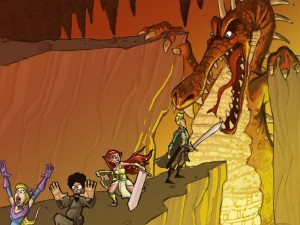 The defining event in the history of Kalderia, the setting for the Frayed Knights series – was the Wizard War. In a nutshell, it was a war that humanity – and their allied races – lost. Even though it was technically considered a win, when warfare wipes out a bigger percentage of the population than the Black Death, it’s not much of a victory. I imagine it as kind of like the Black Death, the Golden Horde, World War I, and the Fall of Rome all combined in about one thirty year period. One year, you have a gleaming civilization with huge cities, and about three decades later there isn’t much more than ruins and some huddled tribes of humans hiding in caves and forests.
The defining event in the history of Kalderia, the setting for the Frayed Knights series – was the Wizard War. In a nutshell, it was a war that humanity – and their allied races – lost. Even though it was technically considered a win, when warfare wipes out a bigger percentage of the population than the Black Death, it’s not much of a victory. I imagine it as kind of like the Black Death, the Golden Horde, World War I, and the Fall of Rome all combined in about one thirty year period. One year, you have a gleaming civilization with huge cities, and about three decades later there isn’t much more than ruins and some huddled tribes of humans hiding in caves and forests.
The masters of both sides were powerful wizards. The arch-lich Nepharides led one side, and a coalition of the civilized world’s most powerful wizards led the other. At least that’s the story. In reality, a number of the more powerful human wizards chose to side with Nepharides. In Frayed Knights 2: The Khan of Wrath, a good chunk of the game takes place in the deserted remnant of one of the more prestigious sorcerer’s schools prior to the war.
The old school of wizardry began as something of a joke (what doesn’t, in Frayed Knights?), but the backstory evolved and spread to much of the rest of the game. The staff was once a united group of some of the best wizards in the world, and they taught the best and brightest (or at least the wealthiest) young magic-users in the kingdom. Then, as the war grew and threatened to engulf the world, the wizards found themselves divided.
Why would some choose to side with a horrible undead monster like Nepharides? In most cases, simple practicality. Nepharides was going to win, they felt. Only those on the winning side would be able to shape the future. They hoped that by working inside the “belly of the beast” they could bring some sanity to the war. Or at least survive to build a better future.
The growing war and their internal divisions forced them to close the school. They sealed it with spells so that no single wizard among them could break it. There had to be some subset of them working in concert. They vowed that they’d get back together after the war ended, in unity of purpose, to reopen the school which would have been preserved from the ravages of battle.
That never happened. The war lasted longer and was more destructive than any of them had imagined. The school was sealed away for over three hundred years, forgotten. The great city it had once bordered had been leveled and forgotten.
Of course, I try and find the humor (sometimes a little on the dark side) in this situation. After all, it’s Frayed Knights. But there’s something special when a world and characters come together almost on their own and I feel like I’m discovering a place rather than creating it.
Oh, and incidentally – that’s why the arcane magic users in Frayed Knights are called “Sorcerers,” not usually Wizards. The word “Wizard” has a pretty negative connotation since the war.
Filed Under: Frayed Knights - Comments: 2 Comments to Read
Captain America vs. Iron Man vs. Batman vs. Superman
Posted by Rampant Coyote on March 10, 2016
Dat costume, wow. Wassa problem, can’t see in the dark, Petey? Aside from that, this looks pretty awesome.
It’s funny how this trailer does its storytelling job. It sets up character, conflict, and escalation. It resonates, largely because this conflict – like the one the original comic book storyline was based on – is a fictionalized version of an issue that’s very much a part of western culture and politics today. The whole individual freedom / personal responsibility vs. the collective good thing. Or, couched another way, the ideals of Chaotic Good vs. Lawful Good. It can get ugly.
The cool thing is that even with the extremely brief arguments here (and I may be tainted because I read the comics), we can see both sides. We care about both sides. Or at least *I* do. I don’t want Iron Man to fight with Captain America… but the voyeur in me is saying, “FIGHT! FIGHT! FIGHT!”
Then, on the flip side, you have Batman v. Superman: Dawn of Justice. The original trailer just left me cold. The final trailer is better, but still didn’t excite me.
And here’s the thing… there’s kind of a similar central conflict here. Supes trashed a huge chunk of a major city in his last film. He’s basically a nuclear power unto himself. And so Batman takes the approach that it’s not the probability, it’s what’s at stake, and apparently takes pre-emptive action. We don’t even see much of what’s going on in Superman’s head… so we don’t care about that guy. All we know is Batman wants to treat him like a villain. Oh, and Wonder Woman jumps in… which is admittedly more exciting to me than Spider-Man appearing in Civil War.
But still, I’m not as enthusiastic. Maybe it’s just poor marketing. Maybe it’s the concept behind the movie itself. Maybe it’s that I’ve read more Marvel comics than I’ve read DC comics. I really don’t think it’s because there are more heroes involved – that tends to complicate things more than it enhances. This article tries to explain the general lack of enthusiasm folks like me feel about this show.
I guess we’ll see. Hopefully I’ll really enjoy both.
Filed Under: Movies - Comments: Read the First Comment
Computer beats Go grandmaster for the first time in history
Posted by Rampant Coyote on March 9, 2016
‘WE MADE HISTORY’: Google’s DeepMind AI just beat a human world champion at Go
It’s only the first of a five-game tournament. But still, this is a huge development. Much bigger, in my opinion, than Deep Blue’s victories over Gary Kasparov 20 years ago. Why? At that point in the 1990s, Chess was already an established, “solved” problem. It had been that way for about four decades, and computers had been beating top players for a couple of decades. The algorithms were progressively improved, and of course the hardware progressively improved, over the years, so that it was really just a matter of time and refinement.
With Go, it was a major leap. First of all, for the last several years, computer Go AI has only been able to play at an amateur level. Then, within months, it made the leap to defeating a professional in a 5-0 sweep, and has now had its first victory against a master. For so long Go was considered the game to beat, the true test of the capability of artificial intelligence. Quite suddenly, that barrier has been shattered.
Secondly, this wasn’t about optimizing a well-understood strategy with better heuristics, but a dramatic practical application of neural networks, machine learning, and other “machine intelligence” systems to learn to play the game. The downside is that there’s no easy way that this skill can be ‘transferred’ back to humans. It doesn’t “understand” the game the way humans do, and what it has learned about playing the game bears no resemblance to human knowledge.
Thirdly – and this ties into the second point – this example of machine learning is not limited to Go. With something like Chess, the basic search and alpha-beta pruning which have general applications, but beyond that it’s all pretty specific to Chess with limited application to other fields. But AlphaGo is an implementation of more general-purpose machine learning. This has applications almost anywhere. In fact, the systems powering AlphaGo were originally used to learn to play old Atari video games. This represents a very practical breakthrough in artificial intelligence as a whole.
So… I guess I should welcome our new robot overlords or something. Even if AlphaGo ends up losing the tournament, this one victory represents an incredibly big deal on many levels. What’s next? Self-driving cars? Oh, yeah, about that…
Filed Under: Geek Life - Comments: 2 Comments to Read
Book Impressions: Servant of the Crown
Posted by Rampant Coyote on March 8, 2016
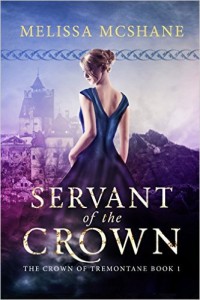 Romance novels aren’t really my thing. At least, I don’t suppose so… I think I could count the number that I’ve read on one hand and have fingers left over. Novels with romance, sure. Romance movies, sure, a few. Romantic comedies, more than a few. But straight-up romance novels, not so much.
Romance novels aren’t really my thing. At least, I don’t suppose so… I think I could count the number that I’ve read on one hand and have fingers left over. Novels with romance, sure. Romance movies, sure, a few. Romantic comedies, more than a few. But straight-up romance novels, not so much.
The thing with Servant of the Crown, the first of the Crown of Tremontane series, is that I don’t think it is really a straight-up romance, either. It’s part romance, part political intrigue fantasy novel set in kind of a regencypunk-esque fictional world with some magic and some high-tech (for the era) technological Devices.
The first half seems to follow the romance structure pretty closely, as I recognize it. A young countess is summoned to serve in the court for six months, temporarily putting her life as the editor for her father’s publishing house and part-time county duties on hold. During this time, she meets the handsome prince, whom she instantly loathes. And so it goes, evenly progressing (maybe too evenly) through the first half of the novel.
Then things start getting complicated. The second half of the book is enterprise and political intrigue, full of sabotage, betrayal, and even murder as things escalate. All the things that make me happy in my kind of books. (I’m like the kid in The Princess Bride: “Murdered by pirates is good.”) There’s still the romance angle, lurking in the fringes and building in the background.
Overall, I enjoyed the book. Even the first half was entertaining, if a little slower than I’d have preferred. But it got me invested in the characters and intrigued by world McShane has painted, a curious mix of magic and technology, and of some modern sensibilities competing against older traditions. The second half is what sucked me in, and what I’ll probably talk about when referring to the story, though. While down-to-earth political games between competing power factions might seem unusual fare for a story sent in a fantasy kingdom with miraculous healing spells and machines that can control a library’s climate, it was refreshing and intense.
I’m looking forward to reading the rest of the series, even though they center around a different generation of characters.
Filed Under: Books, Impressions - Comments: Comments are off for this article
Movie Impression: Dudes & Dragons (formerly Dragon Warriors)
Posted by Rampant Coyote on March 7, 2016
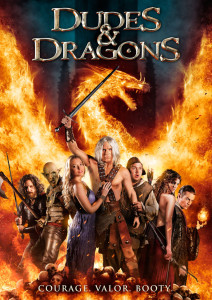 This weekend, I watched Dudes & Dragons, formerly entitled Dragon Warriors, a locally-produced fantasy / comedy film project that I backed as a crowdfunder a long time ago. Their agreement with their distributor prohibited them from sending out the movies to backers before the film went public, which totally sucked from my perspective, but I can understand the rationale.
This weekend, I watched Dudes & Dragons, formerly entitled Dragon Warriors, a locally-produced fantasy / comedy film project that I backed as a crowdfunder a long time ago. Their agreement with their distributor prohibited them from sending out the movies to backers before the film went public, which totally sucked from my perspective, but I can understand the rationale.
My TL;DR take: If you are fantasy fan, you’ll probably want to see this movie. It depends on your sense of humor. It is currently available on Amazon, and I think the DVD is available from Wal-Mart now, and it’s available digitally on iTunes.
Longer take: Starring James Marsters, Luke Perry (well, maybe not starring, but appearing), Adam Johnson, and Kaitlin Doubleday, this movie is a B-rated spoof of fantasy films and tropes. Evil Sorcerer Lord Tennsley (Marsters) has a crush on his beautiful cousin, Ennogard, and has kidnapped her until she agrees to marry him. Until then, he has seized control of a terrible dragon (the “Dolvernaug” or something like that – the pronunciation of its name is a running gag) and is using it to hunt down and destroy all young lovers in the kingdom.
A young lord named Camilan has fallen in love with an elf maiden, which incurs the wrath of both his parents and, if discovered, the dragon. To help him, he enlists the aid of his monster-hunting brother, Ramicus, who also receives a secret message from Ennogard begging for his aid. The plot is further complicated when Camilan’s fiance is critically injured by the dragon, requiring a talon from the beast to complete the spell to heal her. So the group sets forth to defeat the dragon, obtain its talon, and rescue Ennogard from Lord Tennsley.
Knowledge of pop culture helps to enjoy this film, as there are plenty of references scattered throughout… particularly from Star Wars, Lord of the Rings, and Titanic. But it’s plenty of fun throughout. It is extremely heavy on the green-screen effects, and I thought the CGI monsters seemed to be purposefully intended to hearken back to the old Harryhousen-style stop-action monsters of an earlier era.
We were laughing out loud quite a bit during this movie, especially during the efforts to try and ‘bait’ the dragon. Ramicus’ roommate and sidekick, the orc Shoklar, stole the show much of the time. I’m not sure how he managed to emote under all that latex and make-up, but he was hilarious. Camilan’s servant, Samton (“Don’t call me Sam”) also gets plenty of opportunity to shine.
James Marsters gets to go over-the-top as the villain, which is a lot of fun.
The movie is relatively clean, although there are plenty of double entendres and suggestive humor. The violence is largely cartoonish, but there are some off-camera deaths that are pretty gruesome if you think about it, and the make-up injury effects are not for the youngest eyes. Some costumes are probably 50% costume tape. This film probably won’t pass the Bechdel test anytime soon, although it has a wonderful time skewering many manly sword & sorcery tropes. Bare-chested heroes, witches, damsels in distress, and knights in shining armor all get lampooned with little regard to political correctness. And the goblins… ew. The goblins…
Bottom line: It’s good. It’s funny. It’s cheap. It’s for fantasy fans. WIN!
Filed Under: Impressions - Comments: Read the First Comment
Is Microsoft Making Moves To Close the Windows Marketplace?
Posted by Rampant Coyote on March 4, 2016
Is Microsoft setting the stage so that no games taking advantage of the evolution of hardware and the operating system can be sold outside of Microsoft’s own marketplace? This article in the Guardian makes it sound that way. And Microsoft has been making moves in that direction for a long, long time:
Microsoft wants to monopolize games development on the PC. We need to fight it.
Tim Sweeney is worried about this. Gabe Newell is so worried about this he’s put some serious money where his mouth is. It’s definitely a concern to both consumers and developers.
The thing is, we have been fighting this. We have been setting off alarms as Microsoft has made moves in this direction repeatedly over the last decade. And each time, they’ve backed off. Somewhat. So I don’t think it’s been a “boy who cried wolf” deal.
I don’t know how big of a threat this is – I’ll listen to the people more in tune with the situation. As much as Steam’s dominance in the PC game marketplace worries me, it’s not an enforced dominance. This potentially could be.
Filed Under: Biz - Comments: 4 Comments to Read

